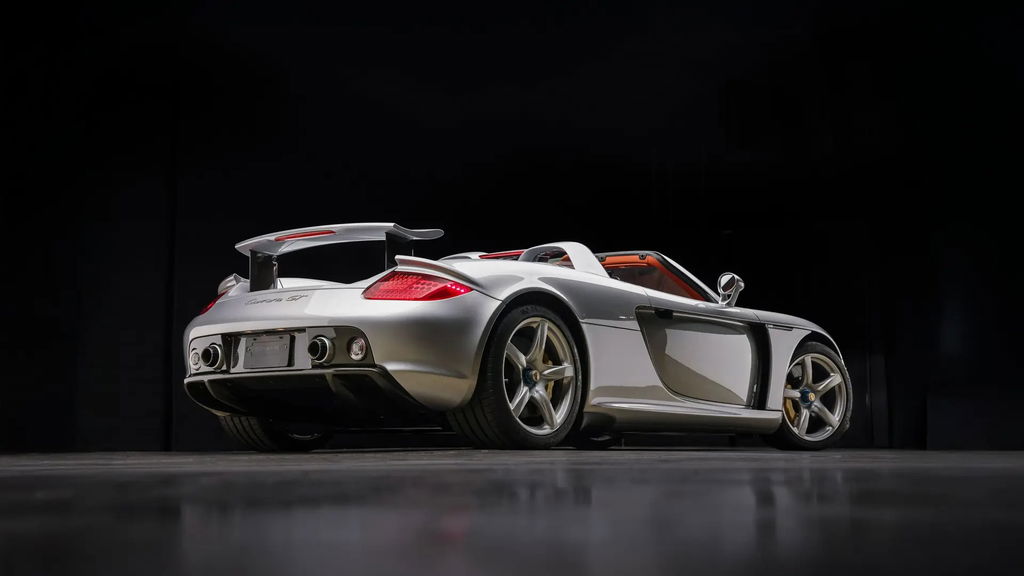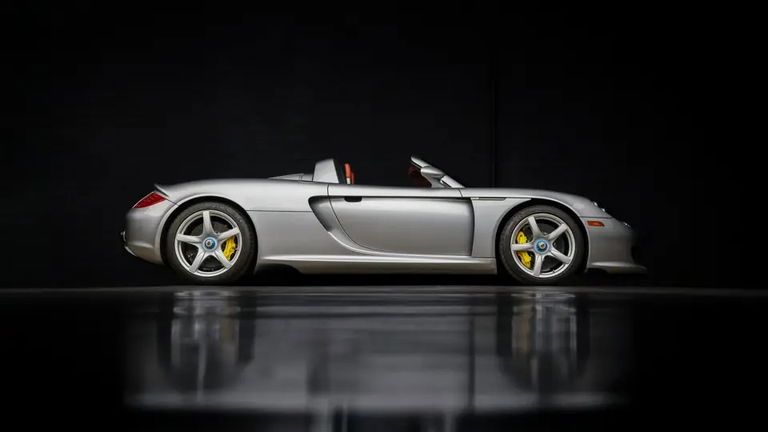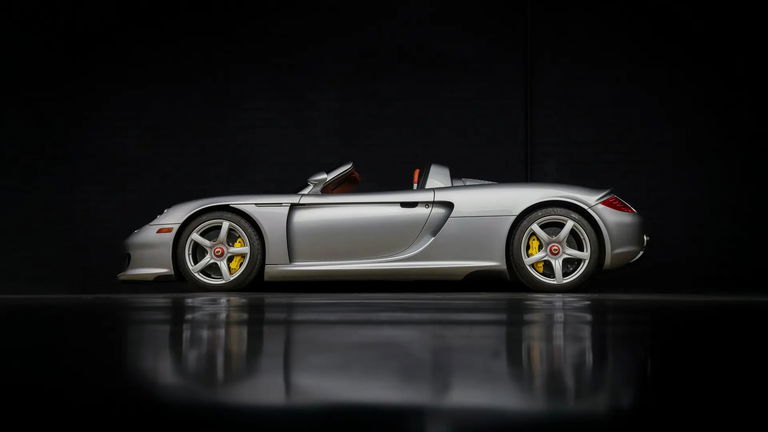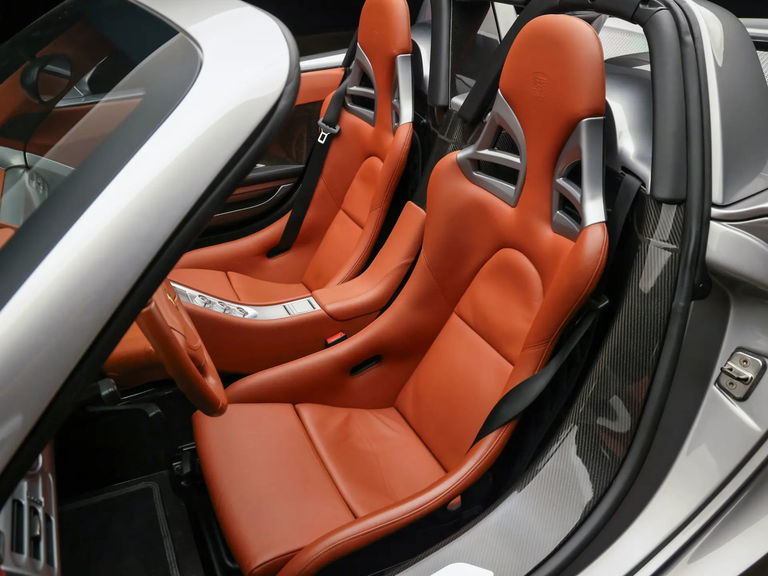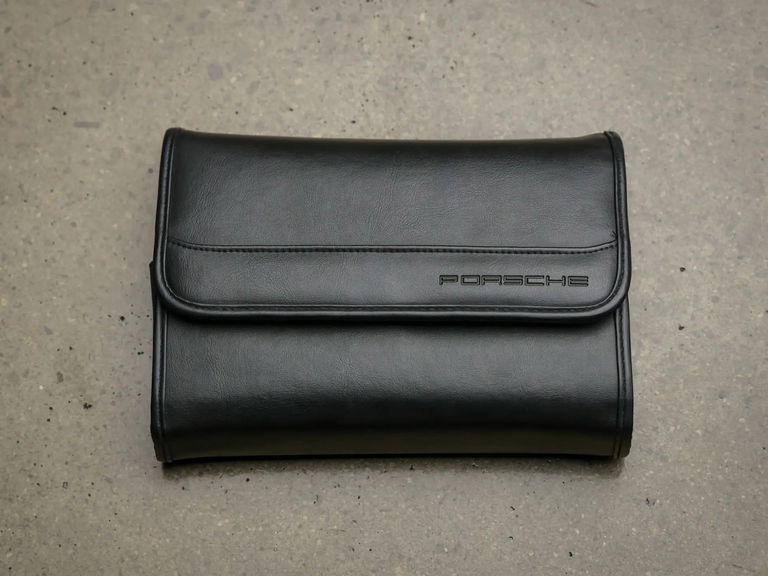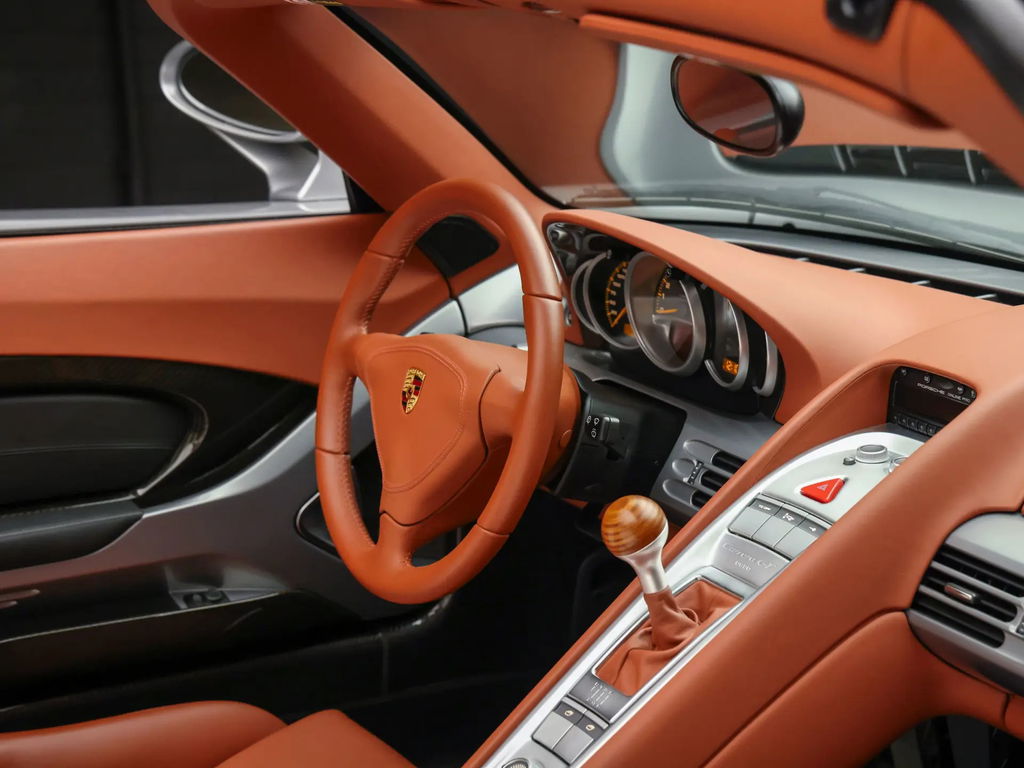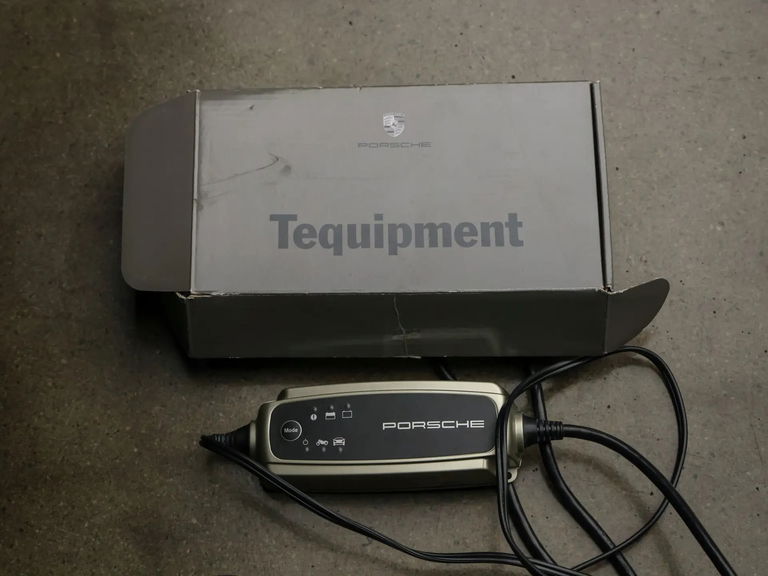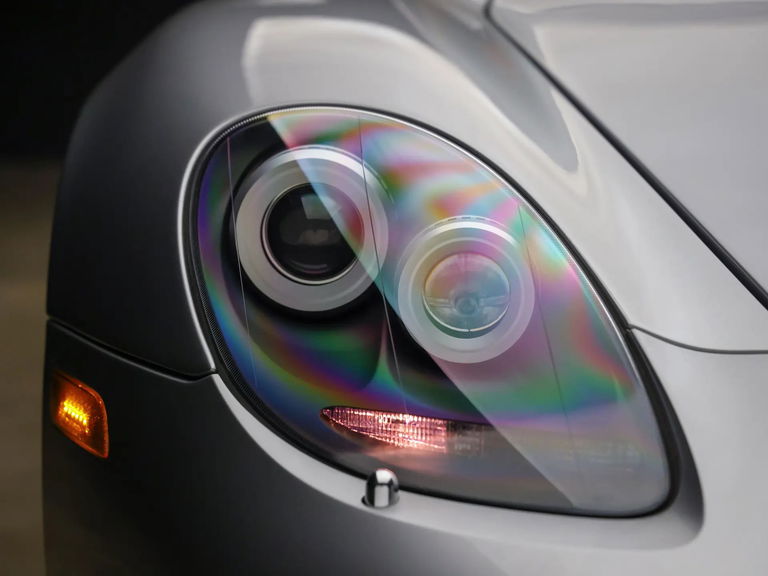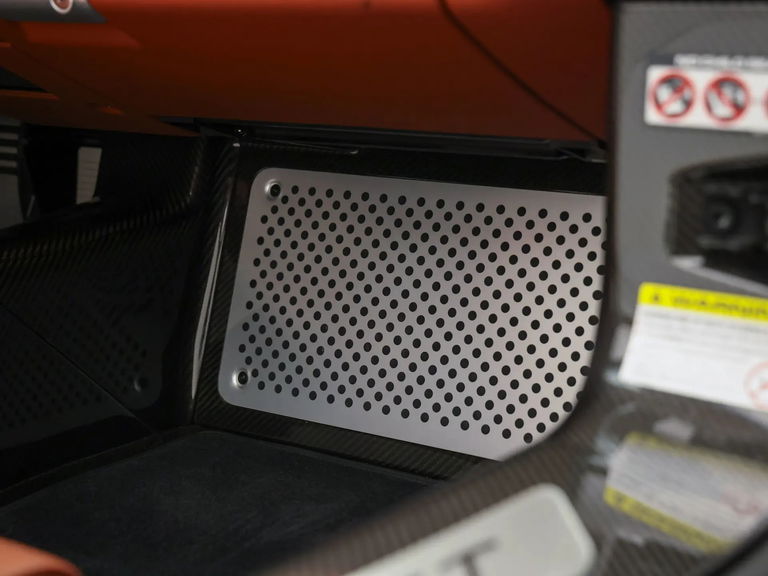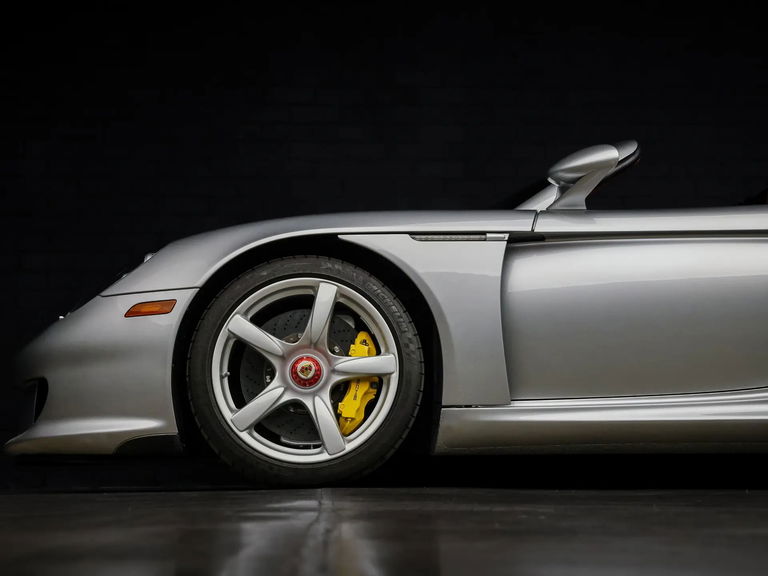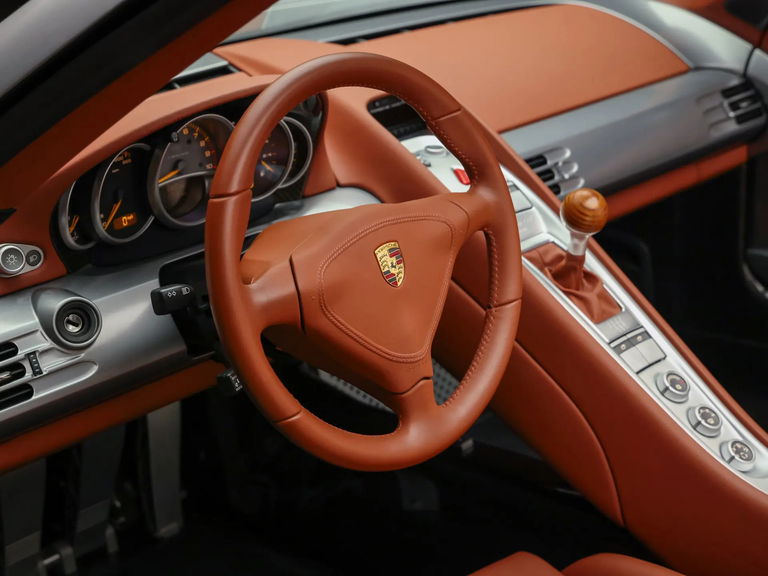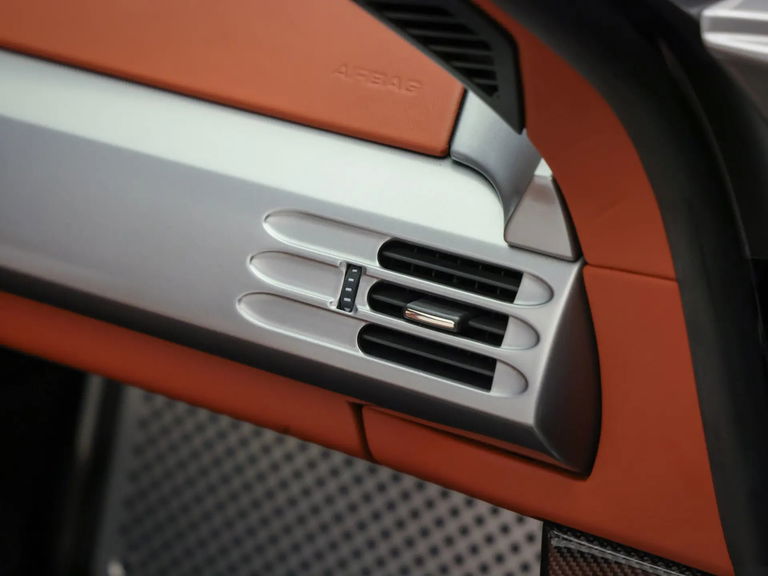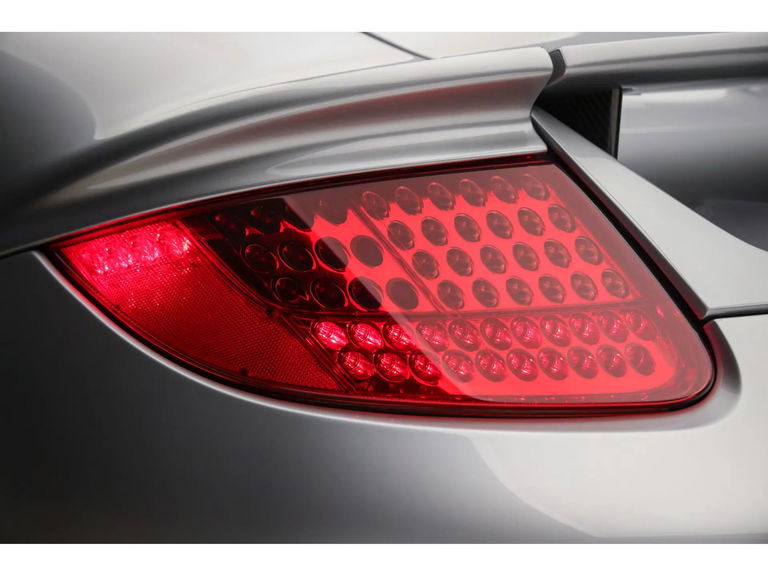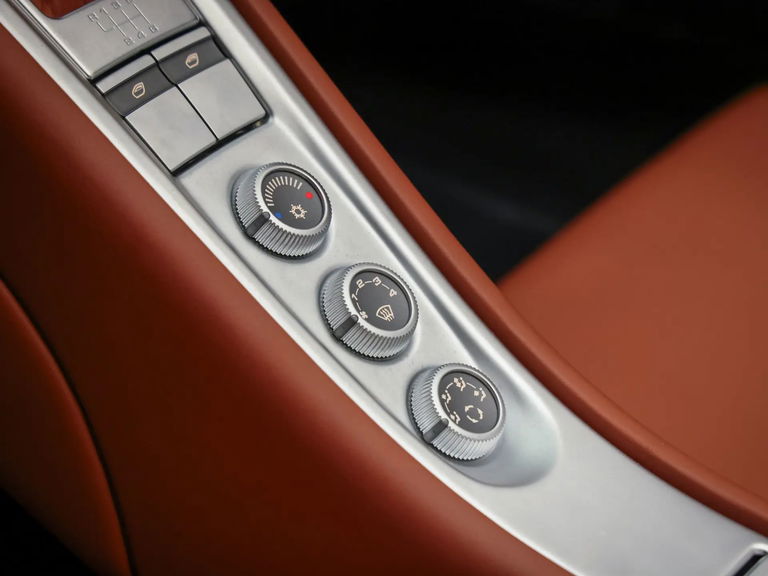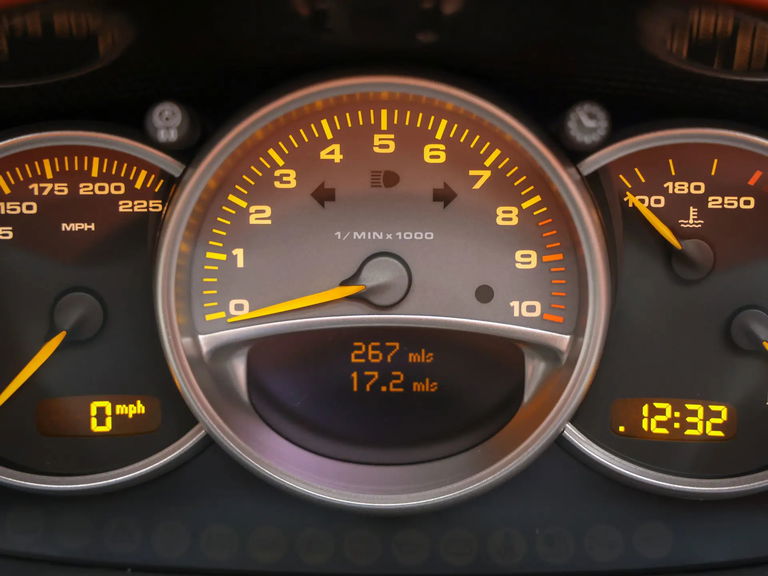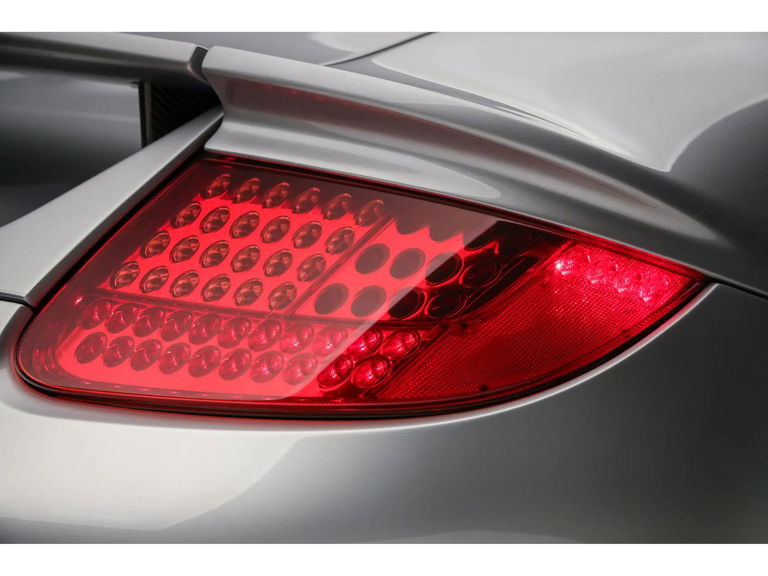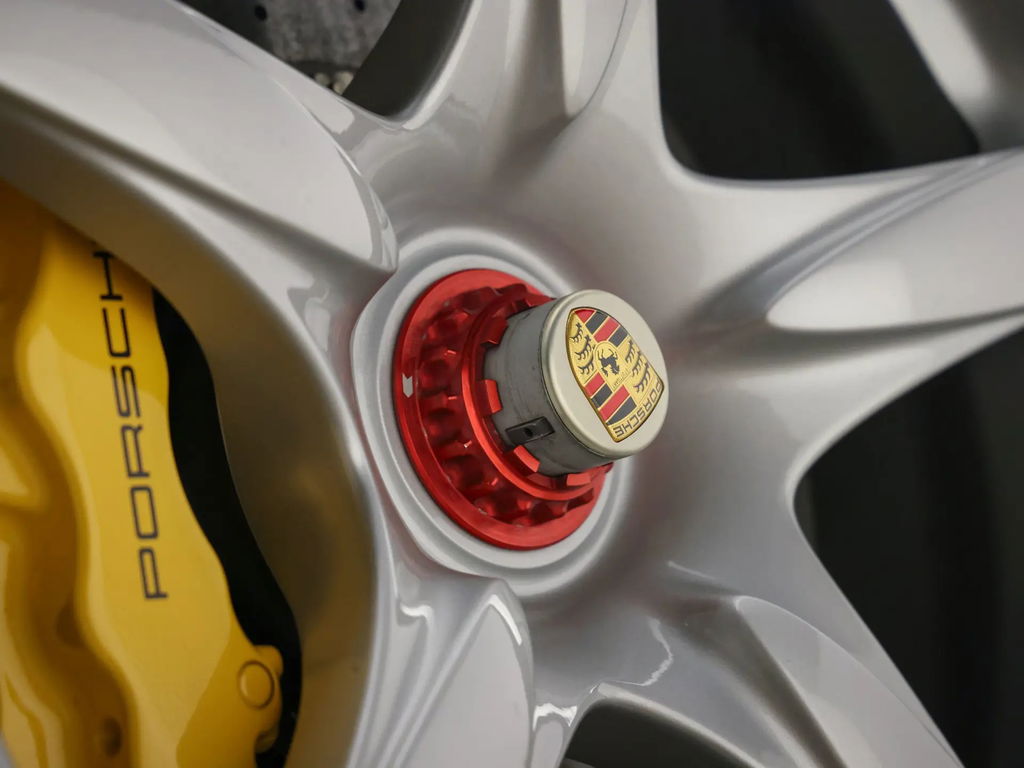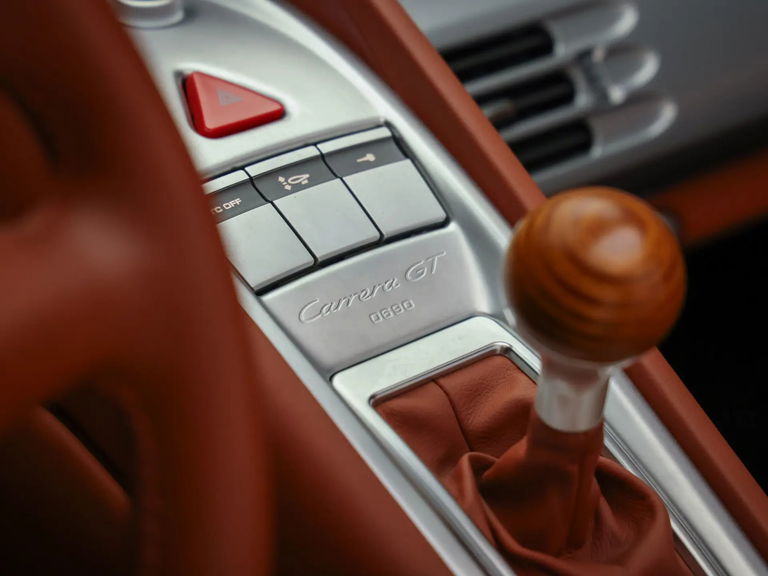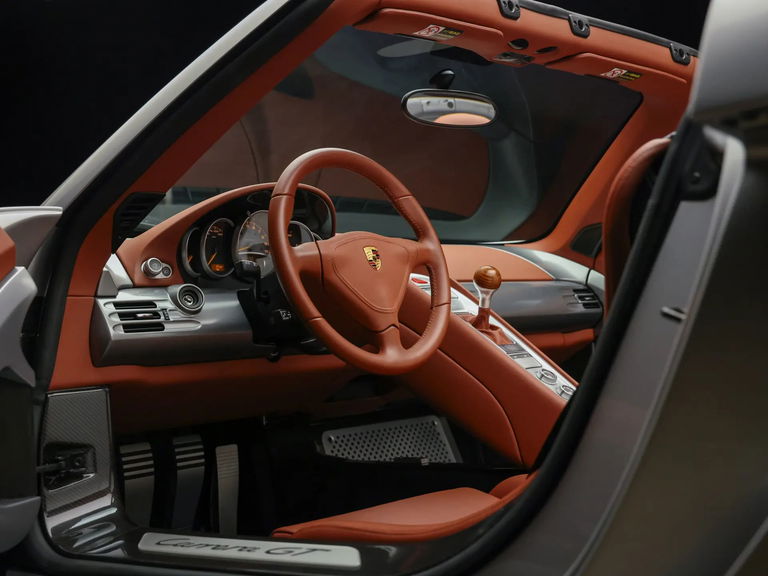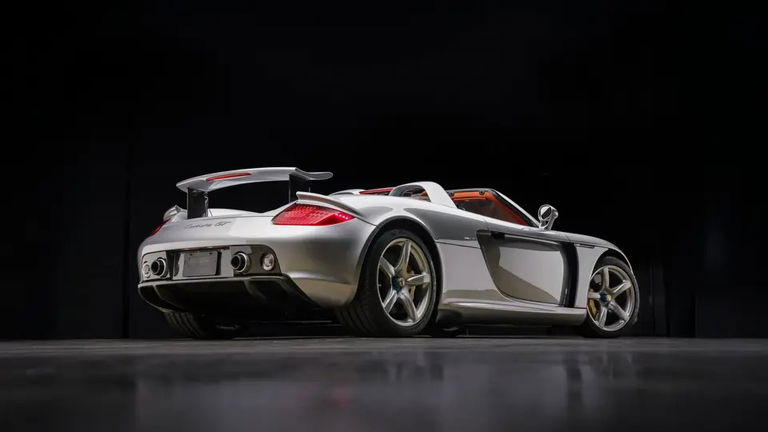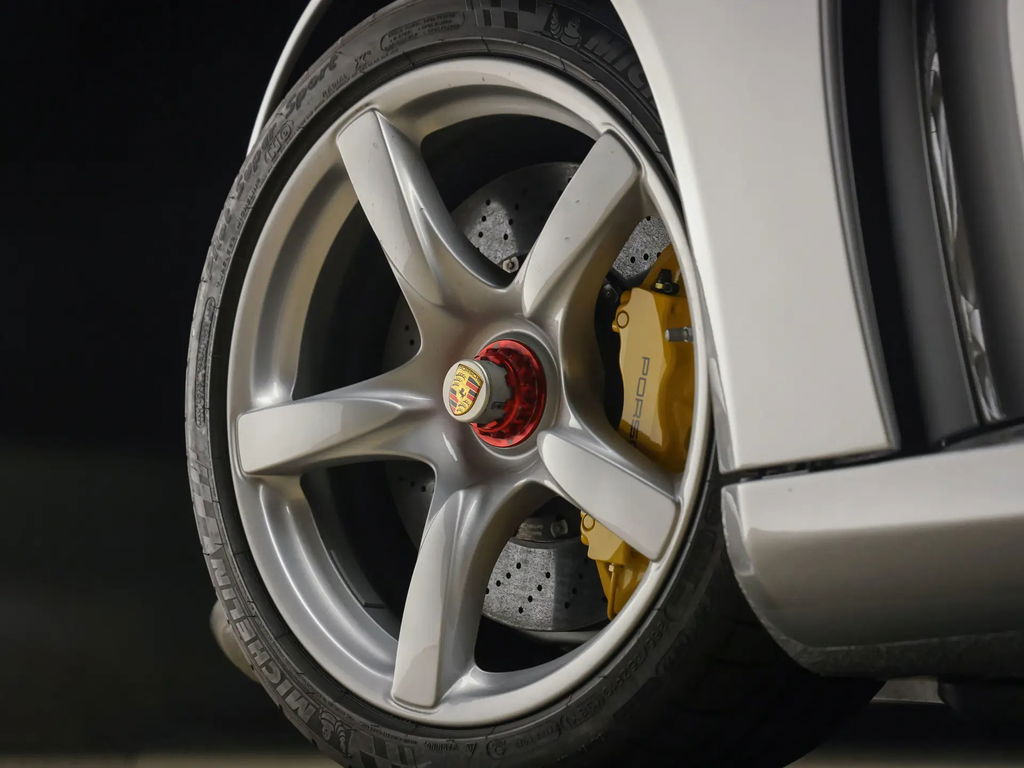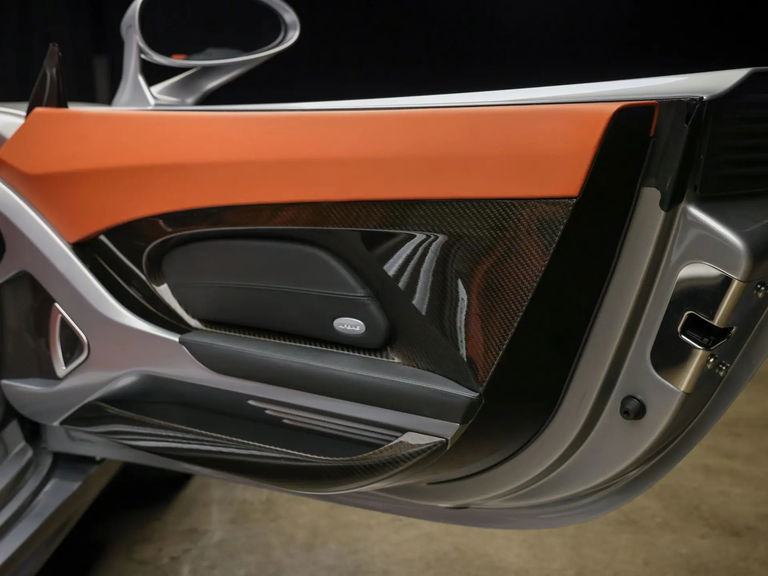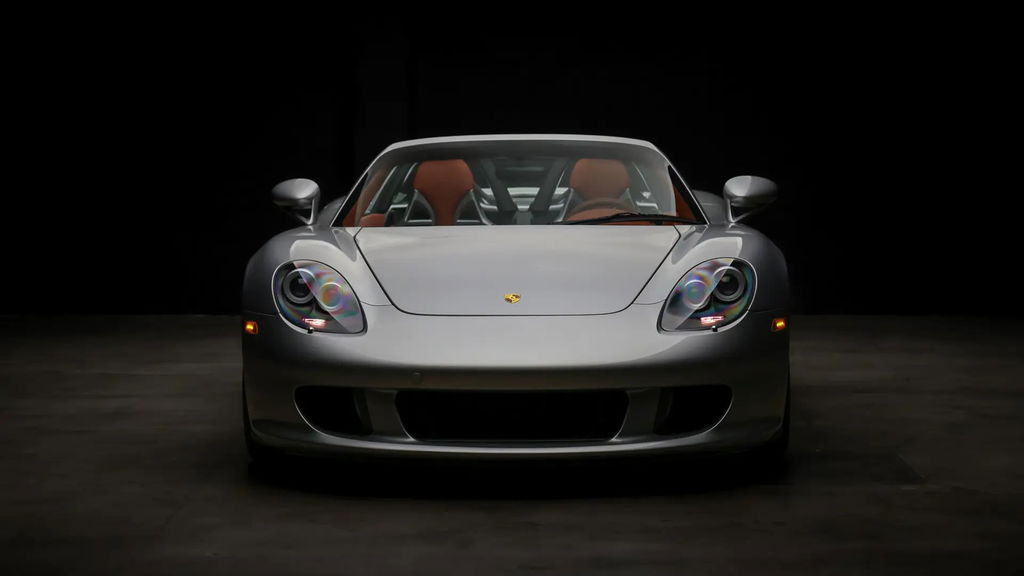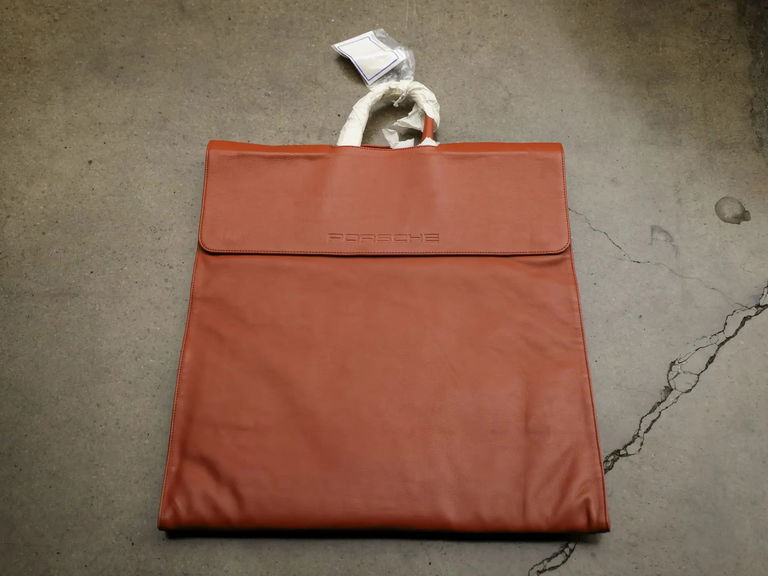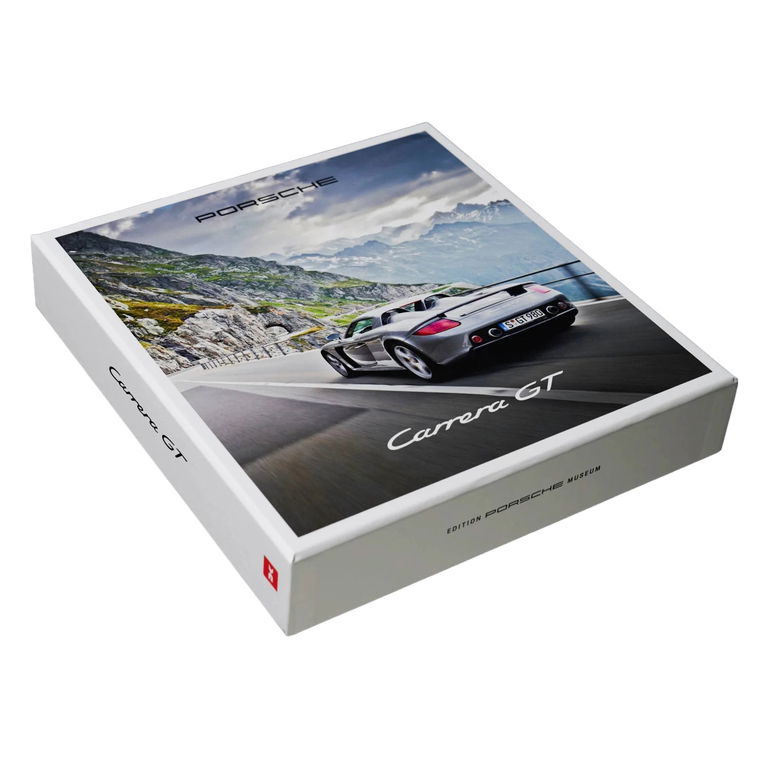Clearly predicated on the racing principles of low weight and extreme power, the Carrera GT was centered upon a lightweight 220-pound driver’s tub of carbon-fiber-reinforced plastic (CFRP). The material was also generously used in the engine subframe and the breathtaking coachwork, which sprung from the pen of Grant Larson, the designer of the popular Boxster. With its sensuous curves and low stance, the body is reminiscent of the racing spyders of the 1950s and 60s, evoking Stuttgart’s proud motorsports tradition.
The jewel-like aluminum V-10 engine, which grew to 5.7 liters in production form, employed an unusual angle of 68 degrees. Overall weight and reciprocating mass were lowered with the use of lightweight racing components such as aluminum pistons, an aluminum intake manifold, titanium connecting rods, and a forged crankshaft. In total the remarkably engineered motor weighed just 452 pounds.
Dry-sump lubrication allowed the mid/rear-mounted engine to be placed very low within the subframe, and a carbon ceramic clutch and low-mass flywheel contributed to free-revving low-inertia performance encapsulated by a redline of 8,400 rpm. Developing 605 horsepower at 8,000 rpm and 435 pound-feet of torque, the V-10 was mated to a six-speed manual transaxle actuated with a beechwood-capped shifter in the style of the celebrated 917.
The net result was earth-shattering performance, as the Carrera GT could reach 60 mph from standstill in just 3.6 seconds, and a top speed of 205 mph, making it an instant member of the exclusive 200+ mph supercar club. Cross-drilled ceramic-composite disc brakes with huge 14.96-inch rotors anchored lightweight magnesium wheels, and an ingenious suspension system derived from the 911 GT1 ensured superior cornering and balance.
Built in a modest quantity of 1,270 examples through four years of production, of which only 644 cars were exported to the United States, the Carrera GT is today regarded as one of Stuttgart’s most desirable prestige models, as proven by its steady increase in value over the last 15 years. The Le Mans-inspired model boasts Weissach’s legendary competition pedigree, striking good looks, and relative rarity, checking all the boxes as one of today’s most appealing “future classics.”
SERIAL NO. 0690: AN EXCEPTIONALLY LOW-MILEAGE CARRERA GT
Claiming a life of minimal driving use through no more than two private ownerships, this striking Carrera GT is among the most desirable examples to be encountered. According to a window sticker copy and a Porsche Certificate of Authenticity, chassis number 001274 was built in March 2005, finished in GT Silver Metallic paint with a matching roof panel over an interior trimmed entirely in Terracotta leather. Further appointed with air conditioning, XT bucket racing seats, Porsche Online Pro audio system with CD player, and a set of luggage in matching Terracotta leather, the Carrera GT was dispatched to the United States, destined for retail by Bert Smith International of St. Petersburg, Florida.
Believed to have remained with one owner in Florida through at least 2017, the Porsche was reportedly purchased by a collector in Kansas circa January 2021. Around this time, the car received an $18,000 service at Byers Imports of Columbus, Ohio, including the installation of a new water pump, engine belts, spark plugs, tire pressure control sensors, and battery. The opportunity was also taken to mount new Michelin Pilot Super Sport tires.
Acquired by the current caretaker in January 2022, this Carrera GT has recently undergone a clutch reading, and it was found to measure 30.34 millimeters. At the time of cataloguing displayed just 267 miles on the odometer. It is accompanied by owner’s manuals, four pieces of Terracotta luggage, wheel nut socket, and documented with service records, window sticker copy, and a Porsche COA. Such a low-mileage and well-maintained Carrera GT would make a fabulous addition to any sporting collection, as a stellar and highly original example of one of Stuttgart’s most significant modern prestige cars.


